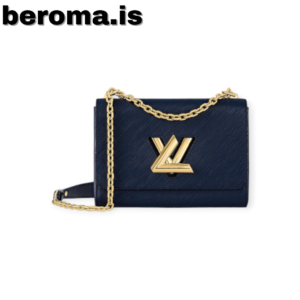 The allure of luxury fashion, exemplified by the iconic style of Louis Vuitton, has always been magnetic. It’s not just about the craftsmanship and exclusivity—it’s about the status, the artistry, and the story woven within each stitch. However, in the shadows of this world, a sinister market thrives: the business of counterfeits.
The allure of luxury fashion, exemplified by the iconic style of Louis Vuitton, has always been magnetic. It’s not just about the craftsmanship and exclusivity—it’s about the status, the artistry, and the story woven within each stitch. However, in the shadows of this world, a sinister market thrives: the business of counterfeits.
In recent years, counterfeiters have become alarmingly sophisticated, birthing what the industry has coined ‘super fakes.’ These master fabricators are designing Louis Vuitton knock-offs that are alarmingly close to the real deal, at prices that seem too good to be true—because they are.
But the story runs deeper than economic concerns; it involves questions of personal ethics and the broader impact on the fashion industry. In this exploration, we’ll dissect the appeal, the risks, and the larger implications of the super fake phenomenon, urging consumers to make decisions that align with their values and the greater good.
Understanding Super Fake Louis Vuitton Bags
The term “super fake” isn’t just a jargon— it signifies a new echelon of counterfeit product. These imitations are engineered with such precision that they can deceive even the most discerning eye. For Louis Vuitton aficionados, distinguishing between a “super fake” and the real deal isn’t just about avoiding the obvious tells, like the notorious Upside Down LV logo. It’s about the finer details of craftsmanship, materials used, and rigorous quality control that the luxury brand is renowned for.
What makes a super fake so convincing is the elevated materials and workmanship that go into creating them. Counterfeiters invest in top-quality materials, use high-tech equipment, and employ skilled artisans, often ripped from the very factories that produce authentic items. These are not your average knock-offs; they’re nearly identical twins.
The Attraction and Risks for Consumers
If super fakes are almost like the real Louis Vuitton, then what’s the harm in buying them? For consumers, the temptation of owning a piece that looks and feels genuine, even if it isn’t, is a powerful one. After all, the authentic counterparts bear price tags that can reach the tens of thousands of dollars.
Yet, there’s a host of risks beneath the surface of those enticing price points. Firstly, it’s illegal. Second, the materials and labor used in these counterfeits often skirt laws and moral standards, providing no guarantee of safety or ethical sourcing. Third, there’s the risk of supporting criminal networks associated with the counterfeit industry.
Impact on the Fashion Industry
The ripple effect of counterfeit luxury goods is a complex and far-reaching tide that undeniably affects the fashion industry. The flood of super fakes distorts the perception of brand value and dilutes the exclusivity that luxury brands work so hard to cultivate. This, in turn, can erode consumer trust and impact the economy, as legitimate sales decline and tax revenues are lost.
Efforts to combat the counterfeit market are extensive and involve everything from high-profile legal battles to behind-the-scenes investigations. Companies invest heavily in anti-counterfeiting technologies, develop partnerships with law enforcement, and foster educational campaigns. Despite these efforts, the counterfeit industry is a Hydra—it chops one head, and two more spring up in its place.
Ethical and Moral Considerations
It’s important to go beyond the legality of counterfeit goods and consider the moral compass. The implications are broader than one’s purchase. They embody a stance on intellectual property rights and fair compensation for creatives. Supporting counterfeit markets undercuts the very spirit of artistic innovation and the investment in product development that authentic luxury items represent.
Furthermore, there are ethical implications for consumers, especially those who may be unaware that their purchase is not genuine. The disappointment of finding out a beloved item is fake, or worse, the embarrassment of being called out for it, can be distressing. There is value in honest representation and transparency.
Alternatives for Budget Shoppers
Adhering to a budget doesn’t mean giving up on the dream of owning a luxury piece. There are numerous ways for budget-conscious fashionistas to find authentic designer goods without feeding the fake market. Director-sale pieces, outlet stores, and luxury resale sites like TheRealReal, Vestiaire Collective, and Tradesy offer genuine designer items at significantly lower prices.
For those who appreciate high fashion but prioritize ethics and sustainability, the burgeoning second-hand market is a gold mine. It’s a place to find unique and timeless pieces, upholding the value of the original designer and practicing conscious consumerism.
Conclusion
The counterfeit goods market, and particularly the rise of super fakes, is a symptom of a larger issue that extends beyond mere economic losses for luxury brands. It touches upon the core of what luxury represents in our modern society—authenticity, art, and stories that transcends material value. By choosing authenticity and supporting the efforts of designers and brands who bring genuine luxury to life, we are not only making a sound legal decision, but an ethical and moral one that upholds the beauty and integrity of true creative design. It’s about fostering a fashion economy that thrives on originality and ethics, and about celebrating the true spirit of luxury that goes beyond logos and price tags.
We, as consumers, have the power to shift the narrative away from counterfeits and towards a more informed and ethical way of indulging our sartorial passions. We can do so by raising awareness, making conscious purchasing decisions, and supporting genuine and innovative creators. After all, true luxury is not just about what we wear, but about the values we choose to embody in our personal and public lives.